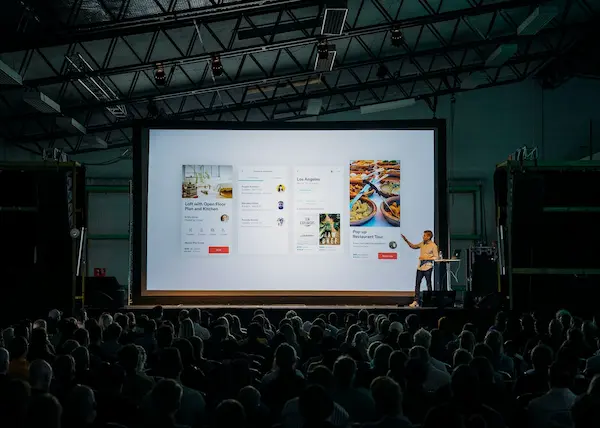Creating a meaningful and engaging presentation is a crucial yet often challenging aspect of doing business. Whether you are the CEO of a multinational company or an executive presenting a quarterly earning project, capturing your audience’s attention and delivering your message succinctly could make a tremendous difference. In this article, we will focus on some valuable tips to design compelling custom presentations that resonate with your audience and leave a lasting impression.
Understanding Your Audience’s Needs
A truly engaging presentation starts with a targeted audience analysis. This doesn’t necessarily mean you have to perform extensive surveys or data collection. However, understanding the basic profile of your audience, including their interests, current knowledge levels, and why they are present at your presentation, can assist you in tailoring your content and delivery style to their needs. This level of customization can make your presentation stand out and captivate your audience’s attention.
Incorporating the audience’s needs into the structure and content of your presentation not only shows that you respect your audience’s time but also that you have carefully thought out your stance. This forms a realm of authority and credibility around you, which can do wonders for the way your message is received and interpreted.
Working with Presentation Design Experts
Working with a presentation design expert can make a significant impact on how your content connects with your audience. A presentation is more than just slides; it is a powerful tool to convey your message, influence opinions, and engage your audience. A presentation design expert understands the art and science behind creating a visually appealing and impactful presentation.
One of the key benefits of collaborating with a presentation design expert is their ability to understand your target audience. They can help you craft a presentation that resonates with your specific audience, whether it’s potential clients, investors, or colleagues. By analyzing the demographics, interests, and preferences of your audience, they can suggest appropriate visual elements, colors, and fonts that will effectively communicate your message.
Additionally, a presentation design expert is trained in graphic design principles and is very proficient in utilizing various multimedia tools and techniques to enhance your slides. They can integrate images, videos, animations, and infographics seamlessly into your slides to bolster comprehension and engagement. These visual elements can aid in explaining complex concepts, highlighting important data points, and adding visual interest to your presentation.
Creating Engaging Content

An engaging presentation is always underpinned by engaging content. No matter how visually appealing your slides are, if your content fails to engage the audience, your presentation may lose its impact. This is where storytelling comes into play. An effective storytelling approach can transform even the most routine information into a captivating narrative. The key is to create a connection between your content and the audience.
To create interactive content, think about introducing unexpected elements into your speech. This could be an unexpected question, a surprising fact, or even a humorous interlude. Such elements can break the monotony, renew the audience’s attention and keep them engaged with your content.
Another crucial element of engaging content is to keep it concise and straightforward. Information overload can be counterproductive, resulting in “death by PowerPoint,” where the audience retains very little of what was presented. Balance the amount of detail you include, ensuring clarity in your main points. Working with a professional presentation design expert will ensure that you create engaging slides.
Designing Visually Appealing Slides
Once you have the content criterion sorted, it is time to focus on the visually striking aspect of a presentation. The design of your slides can significantly enhance the effectiveness of your presentation. While you want your slides to be visually appealing, remember that they are a support tool, not the main focus. An overly complicated slide design can distract from the core message and fail to add value to your presentation.
When it comes to slide design, less is usually more. A clean, minimalist design allows your audience to focus on the key points without getting distracted by unnecessary graphics or colors. Avoid an overload of text; instead, use bullet points or infographics to convey your information in a digestible format.
Besides language and content, the design plays a critical role in capturing the audience’s attention. Use visuals wisely, incorporate diagrams and charts to explain complex concepts, and use a supportive color scheme that enhances readability and doesn’t strain the eyes. Your audience should be focusing on the message and not trying to decipher what is on the slide.
Rehearsing Your Delivery

An equally important aspect to consider while preparing your presentation is rehearsing your delivery. It’s true that content is king; however, how you convey that content can significantly alter the way the audience receives your message. A perfectly rehearsed speech brings out your confidence, making your message sound more credible.
Spend time familiarizing yourself with your content so that you can deliver your message in a conversational tone instead of reading directly from your slides. It might be helpful to create an outline to use as your notes.
In order to enhance your delivery techniques, try recording yourself presenting. Watch the recording and identify areas where you could improve. This could be reducing filler words, changing your tone, adjusting your pace, or other aspects of your speech and body language. Make notes on these improvements and try to incorporate them in your successive speeches.
Engaging with Your Audience

Engaging with your audience is another essential aspect of delivering an effective presentation. This aids in preventing your presentation from becoming a one-way communication and encourages interaction from the audience. In turn, this keeps them more invested in your presentation and allows them to feel a part of the conversation.
There are many ways to ensure audience engagement throughout your presentation. Start by grabbing attention with a strong opening. This could be a startling fact, a relevant anecdote, a challenging question, or a thought-provoking statement. From there onwards, keep varying your delivery methods to hold their attention. You’ll want to create some stage presence when giving a presentation.
Encourage your audience’s participation by posing questions or considerations throughout your speech. Ask them to share their opinions, consider a concept, or answer a question. Ending your presentation with a Q&A session also provides an opportunity for interactive audience engagement.
Staying on Brand
When it comes to creating a professional presentation, staying on brand is essential for several reasons. First and foremost, representing your brand consistently across all platforms reinforces your brand identity and strengthens brand recognition. By aligning your presentation with your brand guidelines, you establish a sense of consistency and professionalism that builds trust with your audience.
Staying on brand also helps to establish credibility and authority in your industry. A polished and cohesive presentation featuring your brand colors, fonts, and logo shows that you take your brand seriously and have put effort into creating a cohesive brand experience for your audience. This attention to detail demonstrates your expertise and attention to quality, ultimately boosting your credibility.
Additionally, staying on brand allows you to convey your brand message and values effectively. Consistent use of your brand’s visual elements, such as colors, imagery, and typography, helps to reinforce your brand’s personality and voice. This consistency creates familiarity and makes it easier for your audience to connect with your message. It also allows you to effectively communicate your brand’s values, ensuring that your presentation aligns with the overall mission and goals of your brand.
Altogether, creating a professional presentation that resonates with your audience involves thorough preparation, the ability to engage your audience, a well-designed presentation, and enthusiastic delivery. By channeling your efforts into each of these aspects, you can transform even the most complex content into an unforgettable custom presentation for your audience.







